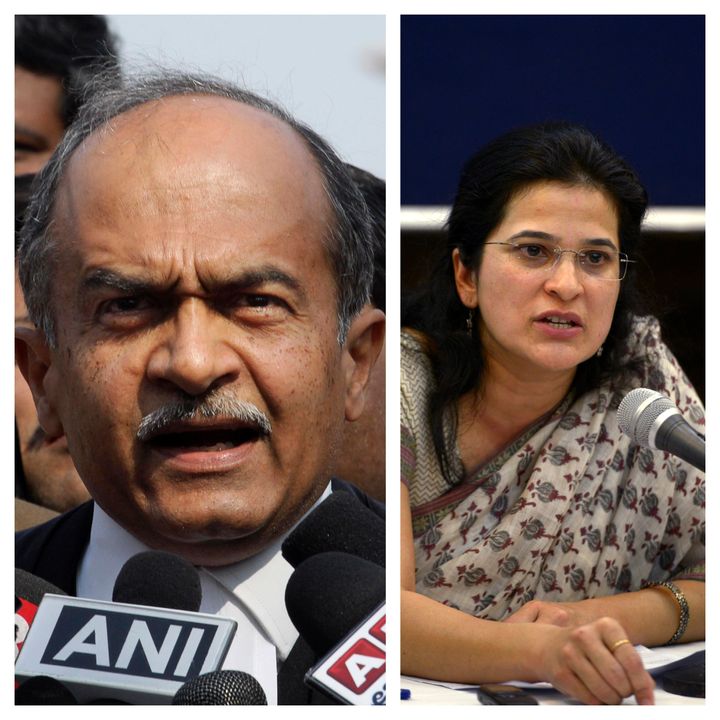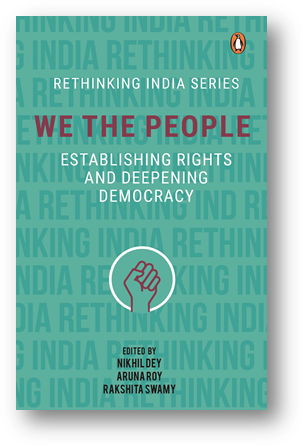
The protection of peoples’ rights is closely linked to the functioning of a fair, independent and effective justice system. In the constitutional scheme, the Indian judiciary occupies a pivotal position as the guardian of the fundamental rights and liberties of individuals. It has been widely credited with pronouncing progressive judgments upholding the rights of the marginalized and the values enshrined in the Constitution. These virtues have not been absolute, however. There have been serious concerns, from time to time, regarding the subversion of the autonomy of the judiciary, including the period when Emergency was declared in the 1970s.
Recent developments have exposed deep fault lines in the Indian judiciary. In January 2018, a press conference was addressed by four senior judges of the Supreme Court. The trigger for the unprecedented step was apparently the arbitrary allocation of benches by the chief justices, with cases being ‘selectively’ assigned to particular judges to obtain particular outcomes. The allegations raised serious doubts about the independence of the judiciary given that an estimated 45 to 70 percent of the litigation involves the government. These doubts have been further exacerbated by the handling of several politically sensitive cases by the apex court involving allegations of corruption against some of the highest functionaries in the government, such as in the Rafale deal and the Sahara–Birla diaries.
In April 2019, allegations of sexual harassment surfaced against the chief justice of India (CJI). The manner in which the case was dealt with brought to the fore questions about the lack of any credible mechanism to examine complaints regarding misconduct by judges of the higher judiciary, especially the CJI. Immediately after the complaint was made, the CJI presided over a hearing in which he himself was a party, flouting the fundamental principle of justice that no one should be a judge in his/her own cause. The complainant was publicly maligned, and in violation of the principles of natural justice, was not even given an opportunity to be heard. After massive public outrage, an inquiry was set up to look into the matter, though the way in which it was conducted foreclosed the opportunity for justice to prevail. The report on the basis of which the complaint was finally dismissed was never provided to the complainant!
“Despite glaring loopholes in the existing procedures, including the fact that there is no effective mechanism in place to receive and act on complaints of misconduct against the CJI, the judiciary has taken no steps to rectify them.”
When allegations of financial corruption surfaced against a previous CJI, in the medical college case, the matter was similarly dismissed with little regard for established procedures and principles. In that case, not only did the Supreme Court dismiss the plea for a court-monitored probe by a Special Investigation Team (SIT), but also held it to be contemptuous and imposed costs on the petitioner organization. The inability of the judiciary to provide a robust and credible system for looking into allegations of misconduct by judges seriously erodes public trust and confidence in the institution. Despite glaring loopholes in the existing procedures, including the fact that there is no effective mechanism in place to receive and act on complaints of misconduct against the CJI, the judiciary has taken no steps to rectify them.
Perhaps one way in which the judiciary could have infused greater accountability in its functioning without compromising its independence was by being transparent. The judiciary has played a seminal role in recognizing and furthering the people’s right to information. Unfortunately, even after the passage of the Right to Information (RTI) Act in 2005, which is also applicable to the judiciary, experience suggests that the courts have not been forthcoming in providing information about their own functioning under the law.
Many RTI applications filed by citizens seeking information from the courts have themselves required judicial adjudication. These include information requests about records related to the appointment of judges, declarations of assets held by judges, cases pending with the apex court in which arguments had already been heard but judgments had been reserved, and correspondence between the then CJI and a judge of the Madras High Court regarding the attempt of a Union minister to influence judicial decisions of the said high court. By resisting transparency in its functioning, the judiciary has evaded its accountability to the people of India.

Opaqueness in the process of judicial appointments has been a matter of intense public debate over the years. The 2015 judgment of the Supreme Court in the National Judicial Appointments Commission (NJAC) matter underlined the need to enhance transparency in the functioning of the collegium system. The refusal of Justice Jasti Chelameswar to attend meetings of the collegium on the grounds that its functioning lacks transparency, with even some members of the collegium not being informed of the basis on which judicial appointments are made, pointed to the deep malaise that afflicts the judicial appointment process. Though some measures have been taken recently to place resolutions of the collegium in the public domain, the memorandum of procedure related to the appointment of judges continues to be kept under covers. The resistance to transparency in judicial appointments is inexplicable, given that in numerous cases, the Supreme Court itself ordered that appointments must be made in a transparent manner on the basis of rational criteria, which are appropriately recorded.
One of the methods the present government has used to control the judiciary is the manner in which appointments and transfers of judges to the higher judiciary are being done. The government has effectively stalled the process of judicial appointments by not notifying the appointment of judges recommended by the collegium to various high courts and to the Supreme Court, even when the recommendations are reiterated by the collegium. This is contrary to the settled law on judicial appointments to the higher judiciary. The apex court in the Supreme Court Advocates-on-Record Association v. Union of India (second judges’ case) had held that once a recommendation has been reiterated by the CJI with the unanimous agreement of the judges of the collegium, with reasons for not withdrawing the recommendation, then that appointment ought to be notified by the government. The executive in such a situation would be bound by the final opinion of the collegium. The courts have also held that compliance with a time-bound schedule for judicial appointments is essential to maintain the integrity of the appointment process. Non-adherence to a time-bound schedule and the adoption of dilatory tactics by the executive results in the stalling of the appointment of various judges to high courts and to the Supreme Court. Sitting on the proposed recommendations and delaying the process of judicial appointments has an adverse effect on not just the appointment process but also the independence of the judiciary.
A critical power that can be wielded by the CJI is to be a prime mover in the appointment of judges. Unfortunately, several chief justices have not pushed the matter with the government by issuing a mandamus on the judicial side or hauling up the government for contempt. Perhaps this reluctance is a result of pressure exerted by the executive on judges through the use of investigative agencies or due to the lure of post-retirement jobs.
The role of the judiciary is critical for the realization of all rights since the judiciary is ultimately the institution where people can seek redress for injustices they have suffered, particularly if other channels of seeking such redress have failed. The lack of transparency and accountability in the functioning of the judiciary erodes public trust in the institution and ultimately hampers its ability to uphold democratic principles and deliver justice.
